Artists L - O
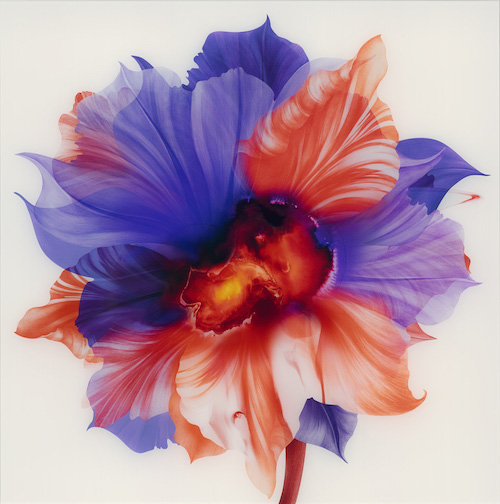
Kahori Maki
Meditative Flower
Ink on Photoshop digital print mounted on acrylic, 43 x 43 inches, 2021
Kahori Maki (b. 1969) is a Japanese-born, internationally educated artist and illustrator who works in various media, including drawing, painting, video, and installation, and regularly exhibits in galleries. Using flowers or plants as motifs, Maki starts from a single drawing that she expands into more complex creations like this work, which is typical of her lavishly detailed and richly textured imagery. In her commercial work, she has designed for magazines, such as Vogue Nippon, and album covers, and has teamed up with fashion brands such as Comme des Garçons. She regularly switches between analog and digital methods and has been working in collaboration with Apple and Adobe Systems.
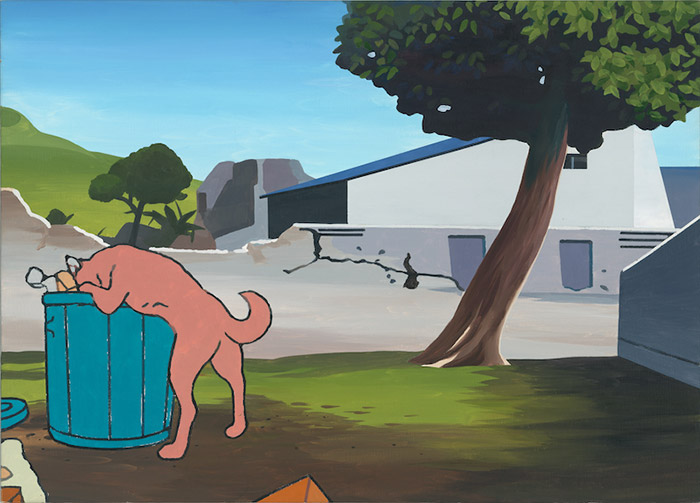
Kenichiro Mizuno
Casual Existence
Acrylic on canvas, 28 1/2 x 39 1/2 inches, 2000
During his childhood, Kenichiro Mizuno (b. 1967) was strongly influenced by the Japanese anime he watched on television. Later, during his student years at Tottori University and Setsu Mode Seminar in Tokyo, his visual interests shifted to cult movies and contemporary art. Mizuno evolved a personal style as an artist, absorbing inspiration from magazines and art gallery visits. Consequently, his works pull from multiple sources, and he uses a range of media—drawing, painting, graphics, and animation—to capture his unique, quirky vision.
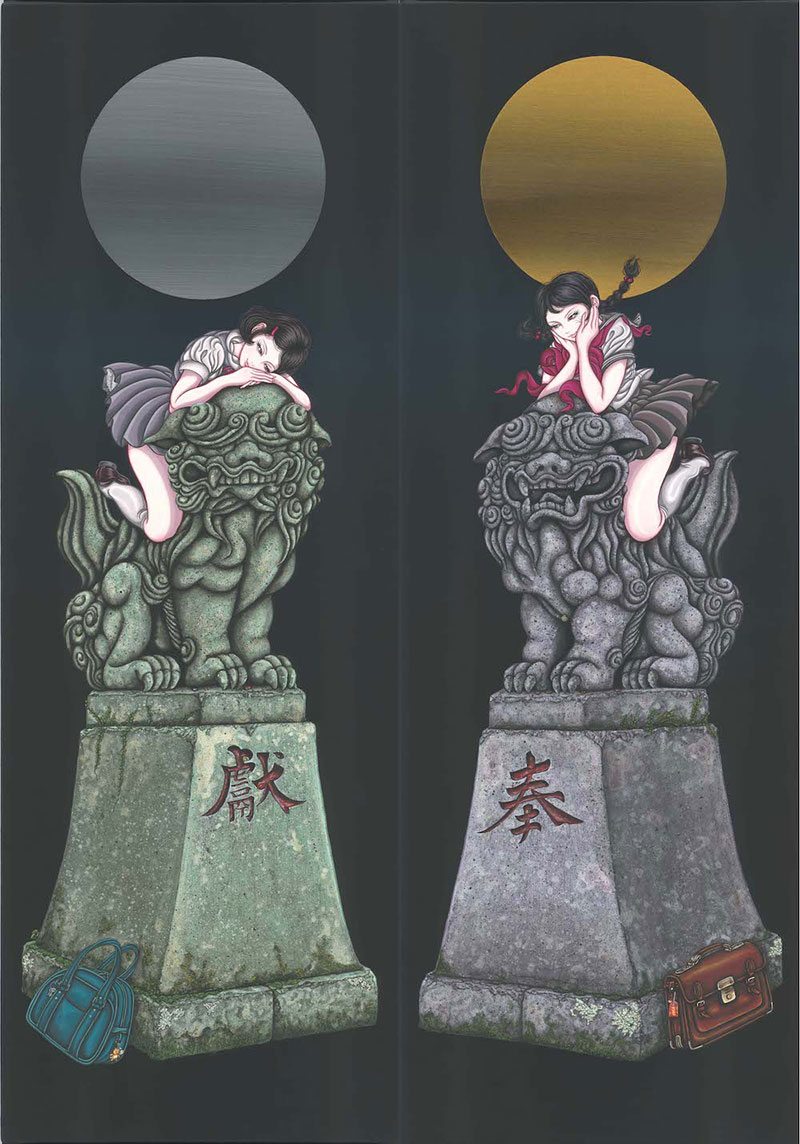
Yuji Moriguchi
A-Un
Acrylic and gesso on canvas, 33 1/2 x 12 inches each, 2016
In the elaborately detailed paintings of Yuji Moriguchi (b. 1971), mysterious and captivating young women hold center stage. Greatly influenced by the ukiyo-e prints of the Edo period (1603–1868), Showa era (1926–1989) imagery, and fantasy, horror, and eroticism, his works evoke a sense of nostalgia for Japanese traditional culture. In this pair of paintings, two schoolgirls sit astride komainu statues, the lion-dog figures who guard Japanese Buddhist temples. The title A-Un is the Japanese version of the Indian sacred spiritual symbol “Om.” One lion’s mouth opens, saying “A” (representing the beginning of all things), while the other’s mouth is closed, saying “Un” (for the end).
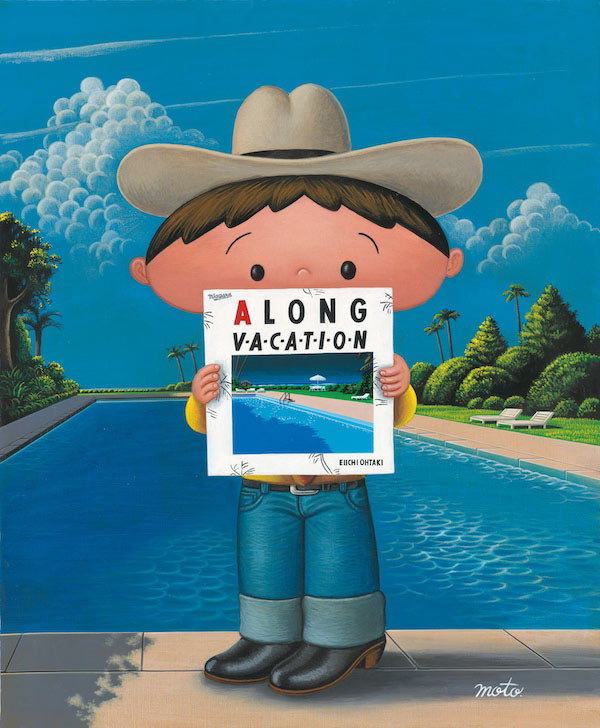
Hideyasu Moto
Recosuke's Long Vacation
Oil on canvas, 24 x 20 inches, 2020
Hideyasu Moto (b. 1969) is a self-taught artist who straddles the worlds of manga and painting. He became an illustrator in 1990 and five years later debuted as a manga artist in the magazine Garo, launching a style that he deliberately tried to make unfashionable. Moto’s love of music records inspired him to create Recosuke-kun, a manga featuring the character Recosuke (meaning “Record-lover”). In this scene, we see Recosuke standing by a pool holding the album A Long Vacation by Japanese musician Eichi Ohtaki, which was released in 1981. The album cover was designed by the artist Hiroshi Nagai (whose work is also in this exhibition). In this painting, Moto plays with the image on the cover to create a sort of trompe l’œil optical effect with the line of the swimming pool.
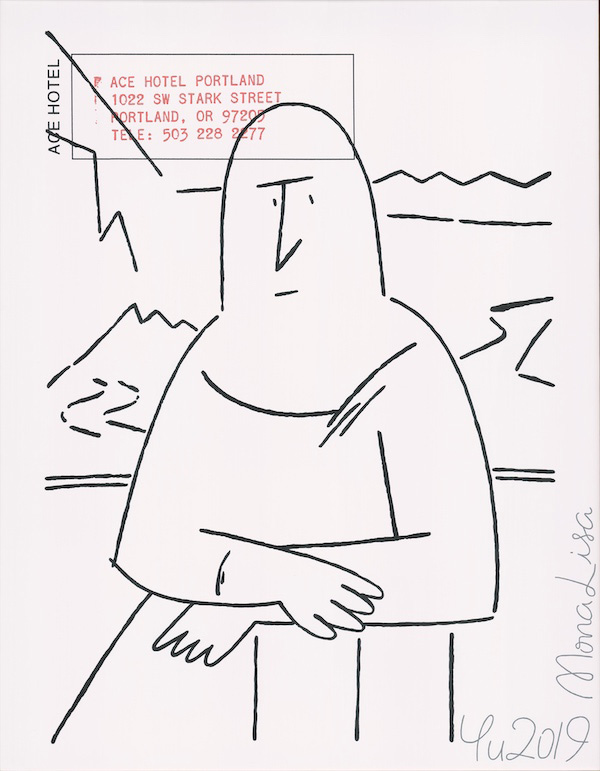
Yu Nagaba
Mona Lisa
Acrylic on canvas, 46 x 35 1/2 inches, 2019
Yu Nagaba (b. 1976) is a Tokyo-based illustrator who attended Tokyo Zokei University but learned art “everywhere.” In his art, he favors simple line drawings over color and detail, opting for quality over quantity. He creates work for advertising and books, collaborates with apparel brands, and has shown in solo exhibitions in Japan and abroad. In 2014, he developed his current artistic style of line drawings with black ink on a white ground. He has made a series of drawings on a memo pad from the Ace Hotel in New York, where he stayed in 2013, and has created similar works on canvas, greatly enlarging the original memo pad.
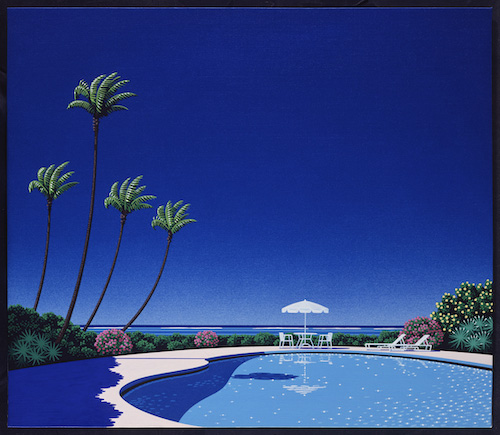
Hiroshi Nagai
Untitled
Digital print on canvas (Original: Acrylic on canvas board, 2003), 34 x 39 1/2 inches, 2021
Hiroshi Nagai (b. 1947) is a self-taught artist from Tokushima on the island of Shikoku. As a child, he discovered painting through his father, who was an oil painter, and went on to work as a set decorator, while also developing his skills as an artist. Highly influenced by American pop art as well as the surrealist works of Salvador Dalí and René Magritte, Nagai designed album covers for many Japanese recording artists (including a cover referenced in the work by Hideyasu Moto in this exhibition). Nagai is best known for his scenes of beaches, swimming pools, and coastal roads, rendered in vivid tones and often empty of people.
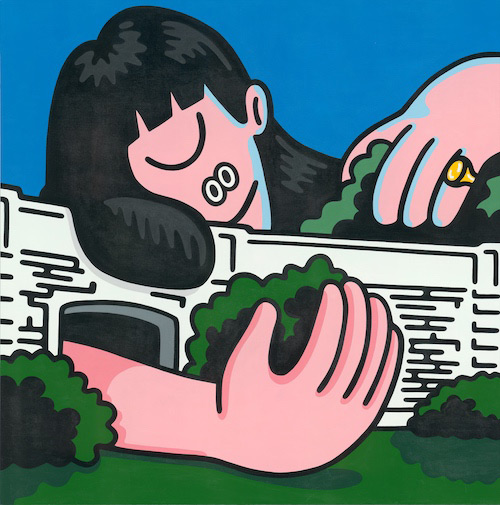
Face Oka
Money than Green Grass
Acrylic on canvas, 46 x 46 inches, 2021
Born to a Taiwanese father and Japanese mother, Face Oka (b. 1985) is a largely self-taught artist/illustrator, who learned from other artists. Creating primarily by hand, he works in the realms of advertisements and magazines and the fashion industry, collaborating with brands such as Better, Human Made, Beams, Uniqlo, and Adidas. In much of his art, he satirizes the Japanese sense of conformity and tendency to avoid confrontation at any price. Here, a giant woman (with the skewed facial features of many of his characters) appears to embrace a bridge that runs through a forest, suggesting the human disconnect with nature.
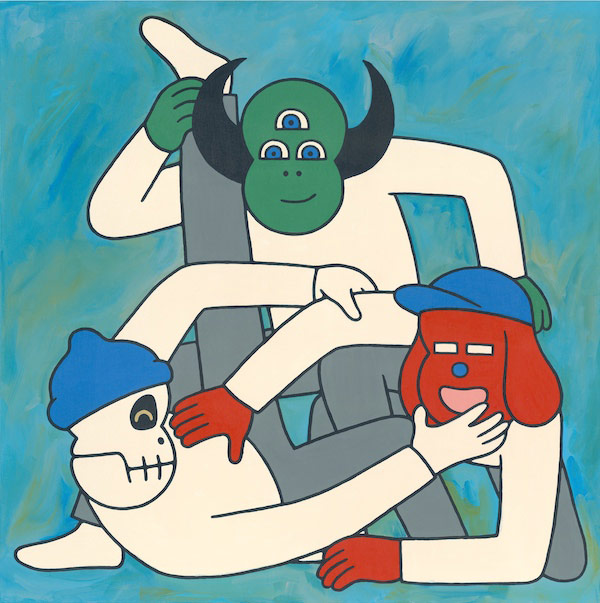
Jun Oson
Good Friends
Acrylic on canvas, 36 x 36 inches, 2021
The work of Jun Oson (b. 1979) spans many fields, including book cover design and illustration, animation, product and clothing design, and print and web-based media. Based in Kamakura, Oson uses a playful pop-art style to explore motifs and themes that are universal and transcend time. Here, we see three out of four of his “Forever Friends” characters—Red Dog, Skully, and the green-faced Belo Belo—intertwined in a convivial wrestling match. These characters appear in paintings like this one, which are exhibited at contemporary art galleries in Tokyo, as well as on merchandise such as T-shirts and action figures.
Main Exhibition Page

